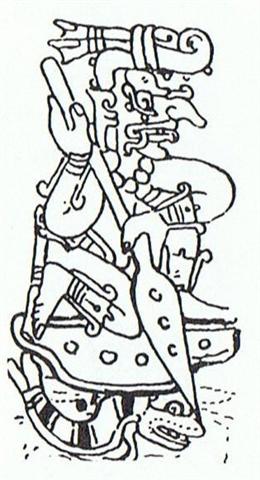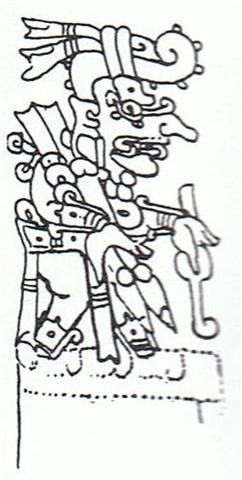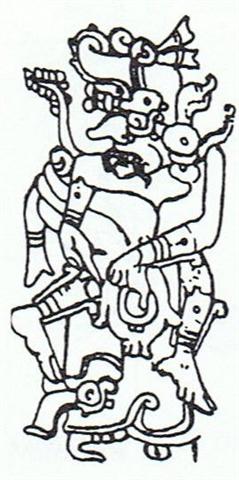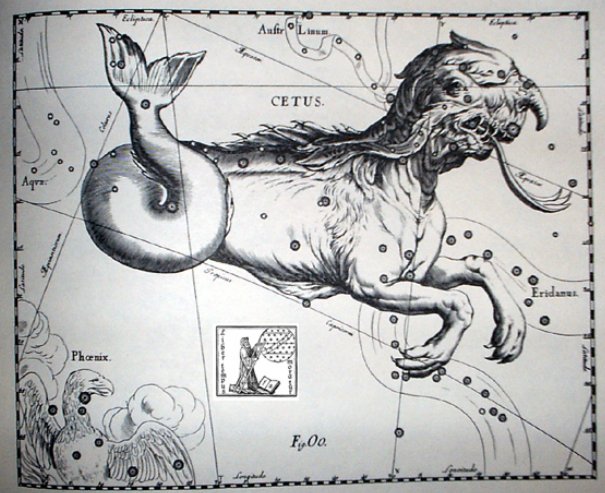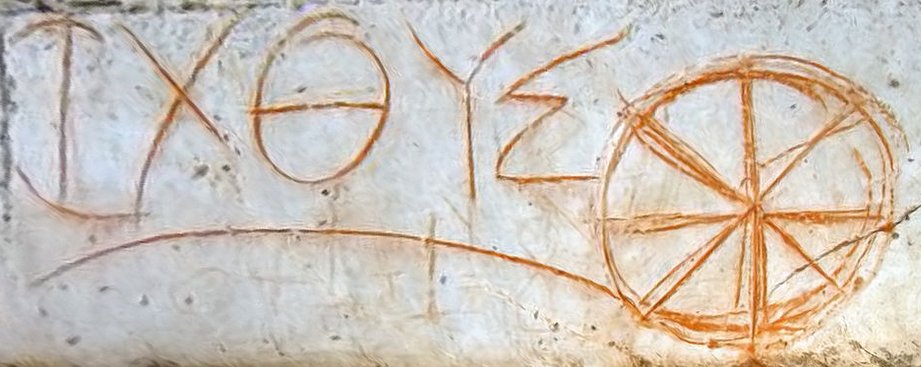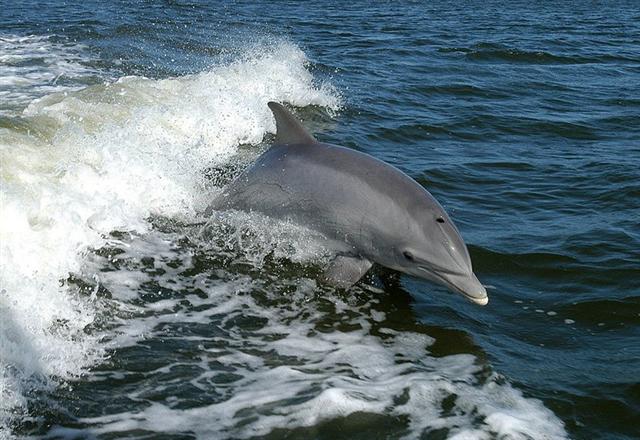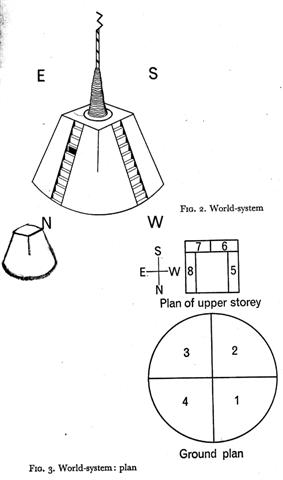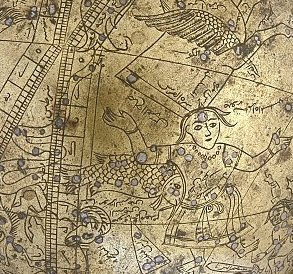Osiris was sealed inside a chest with 72 nails which floated down the River to another Land - to which the Tide (Waters of Time) carried his coffin - and there he turned into a tamarisk.
... But Osiris's evil brother, Set, whose sister-wife was the goddess Nephtys, was mortally jealous both of his virtue and of his fame, and so, stealthily taking the measure of his good brother's body, he caused a beautifully decorated sarcophagus to be fashioned and on a certain occasion in the palace, when all were drinking and making merry, had it brought into the room and jestingly promised to give it to the one whom it should fit exactly. All tried, but, like the glass slipper of Cinderella, it fitted but one; and when Osiris, the last, laid himself within it, immediately a company of seventy-two conspirators with whom Set had contrived his plot dashed forward, nailed the lid upon the sarcophagus, soldered it with molten lead, and flung it into the Nile, down which it floated to the sea. Isis, overwhelmed with grief, sheared off her locks, donned mourning, and searched in vain, up and down the Nile; but the coffin had been carried by the tide to the coast of Phoenicia, where, at Byblos, it was cast ashore. A tamarisk immediately grew up around it, enclosing the precious object in its trunk, and the aroma of this tree then was so glorious that the local king, and queen, Melqart and Astarte - who were, of course, a divine king and queen themselves, the local representatives, in fact, of the common mythology of Damuzi and Inanna, Tammuz and Ishtar, Adonis and Aphrodite, Osiris and Isis - discovering and admiring its beauty, had the tree felled and fashioned into a pillar of their palace ... The same old story seems to be told in the first 4 panels of the Rain God sequence:
We can see how a water serpent (Imix) carries him forward, and then the air, until he can plant his feet squarely on the ground, resulting in him growing up incorporated in a kind of monstrous tree - which makes him stop. Instead of a sarcophagus (meat eater) vehicle for travelling down the River of Time a kind of canoe enabled him to paddle (hoe). In other versions of this fundamental story he was swallowed by a great fish as a means for going to the new Land:
... At some point cetus became synonymous with 'whale' (the study of whales is now called cetology). In his 1534 translation, William Tyndale translated the phrase in Jonah 2:1 as 'greate fyshe' and he translated the word ketos (Greek) or cetus (Latin) in Matthew 12:40 as 'whale'. Which states 'For as Jonas was three days and three nights in the whale's belly; so shall the Son of man be three days and three nights in the heart of the earth ... ... Heracles's rescue of Hesione, parallelled by Perseus's rescue of Andromeda ... is clearly derived from an icon common in Syria and Asia Minor: Marduk's conquest of the Sea-monster Tiamat, an emanation of the goddess Ishtar, whose power he annulled by chaining her to a rock. Heracles is swallowed by Tiamat, and disappears for three days before fighting his way out. So also, according to a Hebrew moral tale apparently based on the same icon, Jonah spent three days in the Whale's belly; and so Marduk's representative, the king of Babylon, spent a period in demise every year, during which he was supposedly fighting Tiamat ... Marduk's or Perseus's white solar horse here becomes the reward for Hesione's rescue. Heracles's loss of hair emphasizes his solar character: a shearing of the sacred king's locks when the year came to an end, typified the reduction of his magical strength, as in the story of Samson ... When he reappeared, he had no more hair than an infant ...
... Delphinus, the Dolphin, is Dauphin in France, Delfino in Italy, and Delphin in Germany; all from the Greek Δελφίς and Δελφίν, transcribed by the Latins as Delphis and Delphin... In Greece it also was Ιερος 'Ιχθύς, the Sacred Fish, the creature being of as much religious significance there as a fish afterwards became among the early Christians; and it was the sky emblem of philanthropy, not only from the classical stories connected with its prototype, but also from the latter's devotion to its young.
It should be remembered that our stellar Dolphin is figured as the common cetacean, Dolphinus delphis, of Atlantic and Mediterranea waters, not the tropical Coryphaena that Dorado represents ... Delphinus lies east of Aquila, on the edge of the Milky Way, occupying, with the adjoining aqueous figures, the portion of the sky that Aratos called the Water. It culminates about the 15th of September. Caesius placed here the Leviathan of the 104th Psalm; Novidius, the Great Fish that swallowed Jonah, but Julius Schiller knew some of its stars as the Water-pots of Cana. Popularly it now is Job's Coffin, although the date and name of the inventor of this title I have not been able to learn. The Chinese called the four chief stars and ξ Kwa Chaou, a Gourd ... ε, a 4th magnitude, although lying near the dorsal fin of our present figure, bears the very common name Deneb, from Al Dhanab al Dulfim, the Dolphin's Tail. But in Arabia it also was Al 'Amud al Şalib, as marking the Pillar of the Cross. In China it was Pae Chaou, the Rotten Melon ...
... Vainamoinen set about building a boat, but when it came to the prow and the stern, he found he needed three words in his rune that he did not know, however he sought for them. In vain he looked on the heads of the swallows, on the necks of the swans, on the backs of the geese, under the tongues of the reindeer. He found a number of words, but not those he needed. Then he thought of seeking them in the realm of Death, Tuonela, but in vain. He escaped back to the world of the living only thanks to his potent magic. He was still missing his three runes. He was then told by a shepherd to search in the mouth of Antero Vipunen, the giant ogre. The road, he was told, went over swords and sharpened axes. Ilmarinen made shoes, shirt and gloves of iron for him, but warned him that he would find the great Vipunen dead. Nevertheless, the hero went. The giant lay underground, and trees grew over his head. Vainamoinen found his way to the giant's mouth, and planted his iron staff in it. The giant awoke and suddenly opened his huge mouth. Vainamoinen slipped into it and was swallowed. As soon as he reached the enormous stomach, he thought of getting out. He built himself a raft and floated on it up and down inside the giant. The giant felt tickled and told him in many and no uncertain words where he might go, but he did not yield any runes. Then Vainamoinen built a smithy and began to hammer his iron on an anvil, torturing the entrails of Vipunen, who howled out magic songs to curse him away. But Vainamoinen said, thank you, he was very comfortable and would not go unless he got the secret words. Then Vipunen at last unlocked the treasure of his powerful runes. Many days and nights he sang, and the sun and the moon and the waves of the sea and the waterfalls stood still to hear him. Vainamoinen treasured them all and finally agreed to come out. Vipunen opened his great jaws, and the hero issued forth to go and build his boat at last ... There were 3 runes missing and they were found inside the belly of the Giant and we can see 3 'nails' in the paddle of the Rain God. Perhaps we should count with 3 * 20 = 60 days 'inside' before the dawn broke:
Or maybe we should count from a more ancient model with a 'pregnancy' measuring 3 * 108 = 264 + 60 = 260 + 64 = 324 days:
And we should also consider the ideas woven together in the tale of Väinömöinen: He wished to build a boat (for going across the waters), he was swollen by a giant, and inside his belly he built a raft. Finally he built a smithy - he became the Smith:
... All was now ready for departure except that there was no fire in the smithy. The ancestor slipped into the workshop of the great Nummo, who are Heaven's smiths, and stole a piece of the sun in the form of live embers and white-hot iron. He seized it by means of a 'robber's stick' the crook of which ended in a slit, open like a mouth. He dropped some of the embers, came back to pick them up, and fled towards the granary; but his agitation was such that he could no longer find the entrances. He made the round of it several times before he found the steps and climbed onto the flat roof, where he hid the stolen goods in one of the skins of the bellows, exclaiming: 'Gouyo!', which is to say. 'Stolen!'. The word is still part of the language, and means 'granary'. It is a reminder that without the fire of the smithy and the iron of hoes there would be no crops to store ...
A raft is usually built by floating timbers and its shape is rectangular or square. The top of the Dogon 'granary' was also a square. It could be that the top of the head of Ku was square (if its form was a Cube): ... According to an etiological Hawaiian myth, the breadfruit originated from the sacrifice of the war god Kū. After deciding to live secretly among mortals as a farmer, Ku married and had children. He and his family lived happily until a famine seized their island. When he could no longer bear to watch his children suffer, Ku told his wife that he could deliver them from starvation, but to do so he would have to leave them. Reluctantly, she agreed, and at her word, Ku descended into the ground right where he had stood until only the top of his head was visible. His family waited around the spot he had last been day and night, watering it with their tears until suddenly a small green shoot appeared where Ku had stood. Quickly, the shoot grew into a tall and leafy tree that was laden with heavy breadfruits that Ku's family and neighbors gratefully ate, joyfully saved from starvation ... This could indeed have been suggested in the Finnish tale: '... He built himself a raft and floated on it up and down inside the giant ...' If a great cube was standing at the bottom of the Sea it could be perceived as a square if the tidal waters barely covered its top. If such a cube was floating, the 'raft' (top square) would move up and down with the tidal waves.
There were 9 gods (layers) in the Mayan Underworld (Xibalba), and they were named Bolontiku. It is hard to avoid reading this word as Bolon-Ti-Ku. The first part means 9:
As to the second part we should remember the necessary qualifying term for measuring time: ... He [Eric Thompson] established that one sign, very common in the [Mayan] codices where it appears affixed to main signs, can be read as 'te' or 'che', 'tree' or 'wood', and as a numerical classifier in counts of periods of time, such as years, months, or days. In Yucatec, you cannot for instance say 'ox haab' for 'three years', but must say 'ox-te haab', 'three-te years'. In modern dictionaries 'te' also means 'tree', and this other meaning for the sign was confirmed when Thompson found it in compounds accompanying pictures of trees in the Dresden Codex ... Which could mean it was necessary to change te to ti when counting time down in the Underworld - because this was short for Tiamat. There were no trees growing in the Sea.
|

